This part describes the driver's restraint system.
Lap-Shoulder Belt
The driver has a lap-shoulder belt. Here is how to wear it properly.
- Close and lock the door.
- Adjust the seat so you can sit up straight. See Reclining Seatbacks .
- Pick up the latch plate and pull the belt across you. Do not let it get twisted. The safety belt may lock if you pull the belt across you very quickly. If this happens, let the belt go back slightly to unlock it. Then pull the belt across you more slowly.
- Push the latch plate into the buckle until it clicks. If the belt stops before it reaches the buckle, let it go back all the way and start again.
- To make the lap part tight, pull down on the buckle end of the belt as you pull up on the shoulder belt.

Pull up on the latch plate to make sure it is secure. If the belt the belt stops before it reaches the buckle, let it go all the way and start again.
Make sure the release button on the buckle is positioned so you would be able to unbuckle the safety belt quickly if you ever had to.
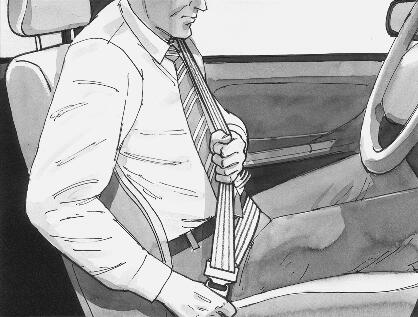

The lap part of the belt should be worn low and snug on the hips, just touching the thighs. In a crash, this applies force to the strong pelvic bones. And you would be less likely to slide under the lap belt. If you slide under it, the belt would apply force at your abdomen. This could cause serious or even fatal injuries. The shoulder belt should go over the shoulder and across the chest. These parts of the body are best able to take belt restraining forces.
The safety belt locks if there is a sudden stop or crash, or if you pull the belt very quickly out of the retractor.
Shoulder Belt Height Adjuster (SL1, SL2, SW2 Models Only)
Before you begin to drive, move the shoulder belt adjuster to the height that is right for you. Adjust the height so that the shoulder portion of the belt is centered on your shoulder. The belt should be away from your face and neck, but not falling off your shoulder.
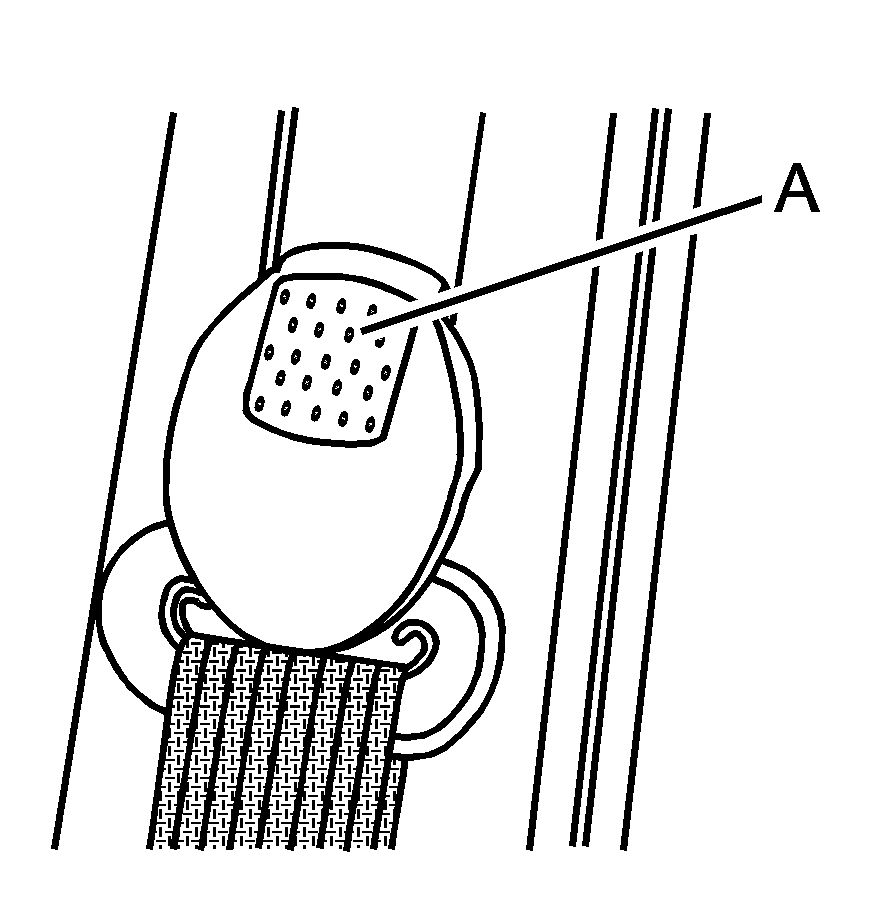
To move it up or down, press the square button in the center of the height adjuster knob and move the height adjuster to the desired position. After you move the adjuster to where you want it, release the button. Try to move the adjuster up and down without touching the square button to make sure it has locked into position.
Question:
What's wrong with this?
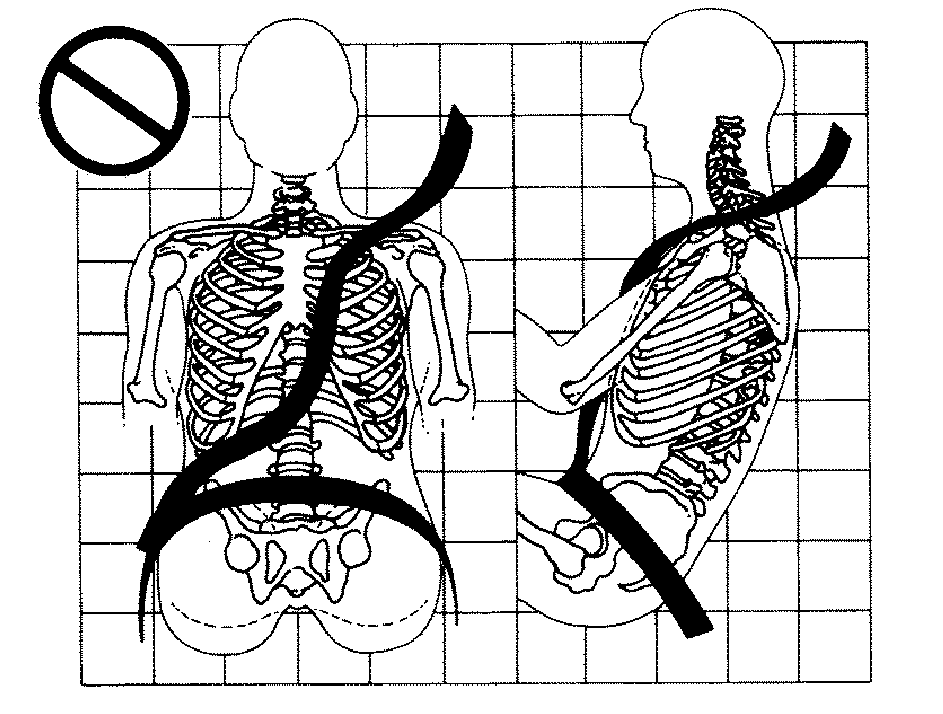
Answer:
The shoulder belt is too loose. It will not give nearly as much protection this way.
Caution: You can be seriously hurt if your shoulder belt is too loose. In a crash, you would move forward too much, which could increase injury. The shoulder belt should fit snugly against your body.
Question:
What's wrong with this?

Answer:
The belt is buckled in the wrong place.
Caution: You can be seriously injured if your belt is buckled in the wrong place like this. In a crash, the belt would go up over your abdomen. The belt forces would be there, not on the pelvic bones. This could cause serious internal injuries. Always buckle your belt into the buckle nearest you.
Question:
What's wrong with this?
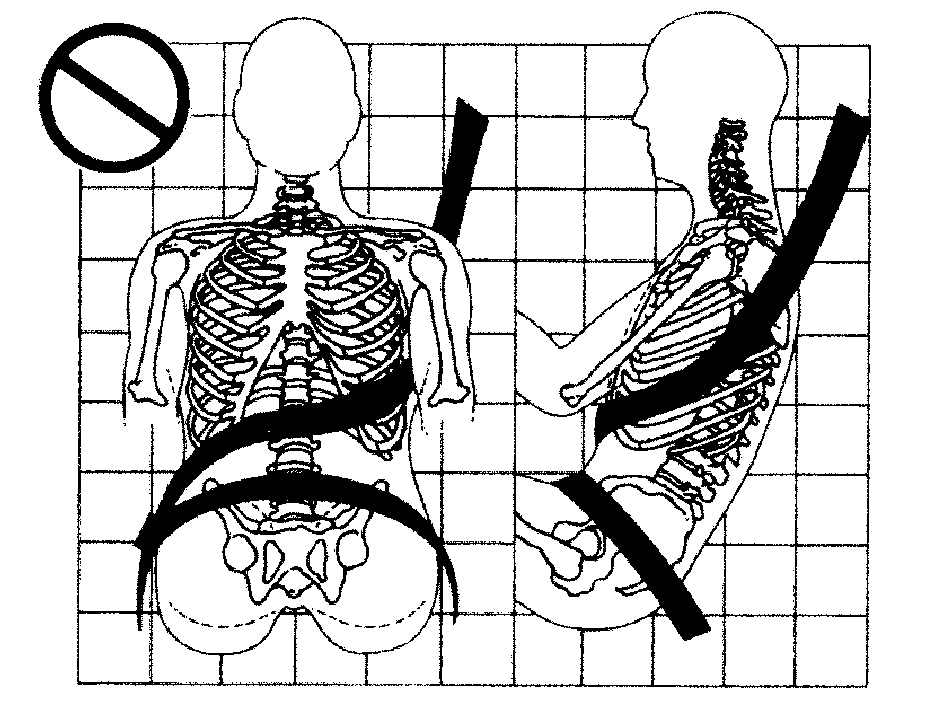
Answer:
The shoulder belt is worn under the arm. It should be worn over the shoulder at all times.
Caution: You can be seriously injured if you wear the shoulder belt under your arm. In a crash, your body would move too far forward, which would increase the chance of head and neck injury. Also, the belt would apply too much force to the ribs, which are not as strong as shoulder bones. You could also severely injure internal organs like your liver or spleen. The shoulder belt should go over the shoulder and across the chest.
Question:
What's wrong with this?
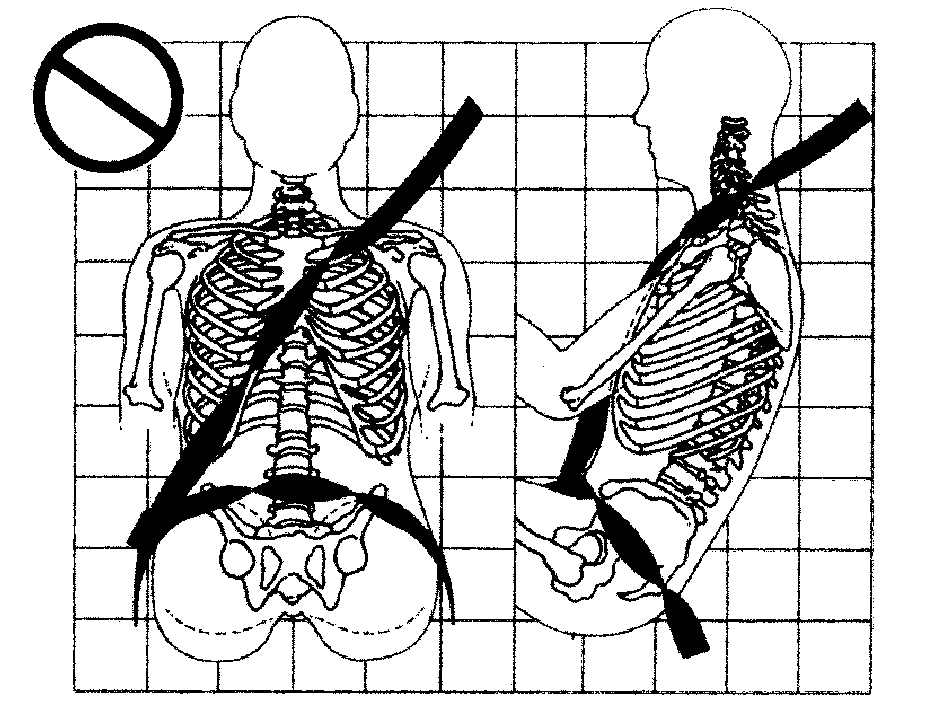
Answer:
The belt is twisted across the body.
Caution: You can be seriously injured by a twisted belt. In a crash, you would not have the full width of the belt to spread impact forces. If a belt is twisted, make it straight so it can work properly, or ask your retailer to fix it.
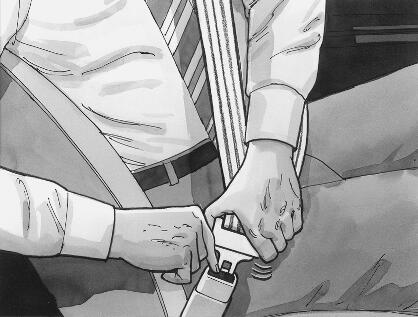
To unlatch the belt, just push the button on the buckle. The belt should go back out of the way.
Before you close the door, be sure the belt is out of the way. If you slam the door on it, you can damage both the belt and your vehicle.
Safety Belt Shoulder Guide
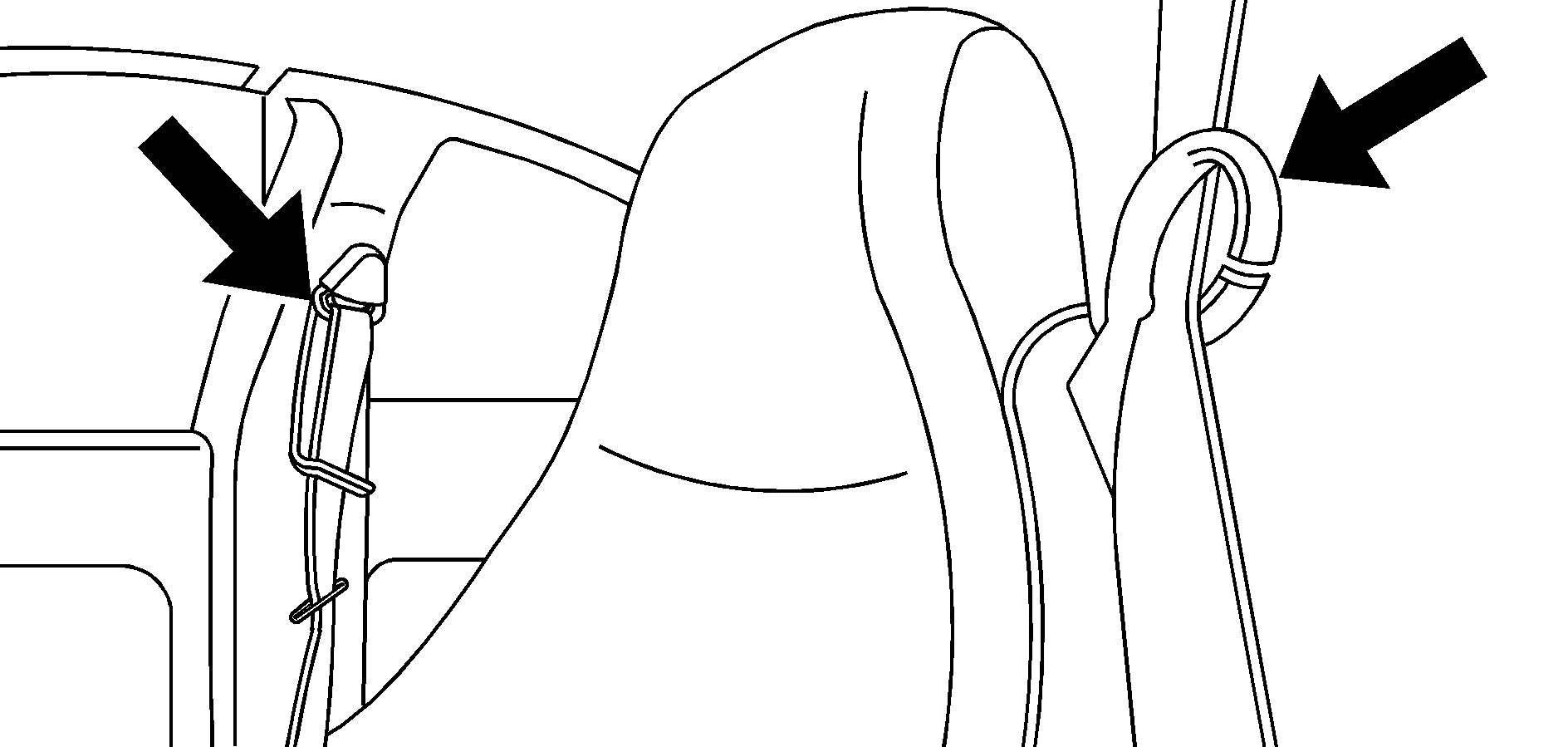
The left-front and right-front safety belt shoulder guide loop is a comfort feature that improves the routing of the safety belt webbing across the occupant's shoulder, neck and torso.
The right-front position has a presenter arm feature attached to the shoulder portion of the safety belt.
Shoulder Belt Presenter Arm (SC1, SC2, Models Only)
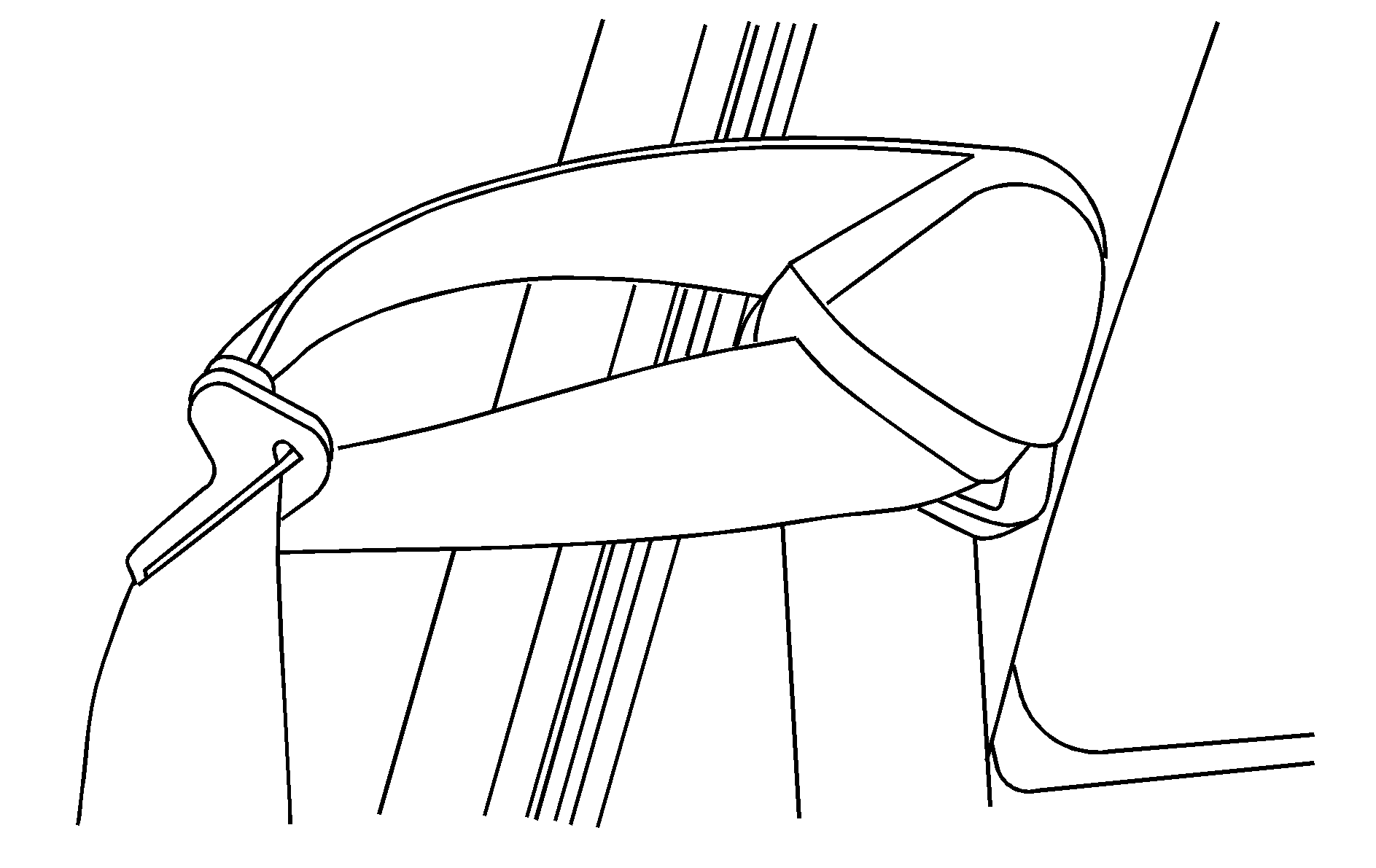
The coupe right front passenger position has a presenter feature attached to the shoulder portion of the safety belt.
The presenter arm helps position the belt forward to decrease the effort needed to reach the latch plate of the safety belt, especially when the seat is in the fill forward position.
- While standing outside of the vehicle, position the arm toward the front of the vehicle (if the arm is not already in that position).
- Sit in the vehicle and adjust the seat so you can sit up straight.
- Fasten your safety belt.
- Position the arm so that the shoulder portion of the belt is centered on your shoulder. The belt should be away from your face and neck, but not falling off your shoulder.

Rear Seat Entry/Exit
To gain access to the rear seat, push the presenter arm down and rearward until it is completely out of the door opening. The lower portion of the belt will also slide completely our of the door opening, allowing access to the rear seat.
